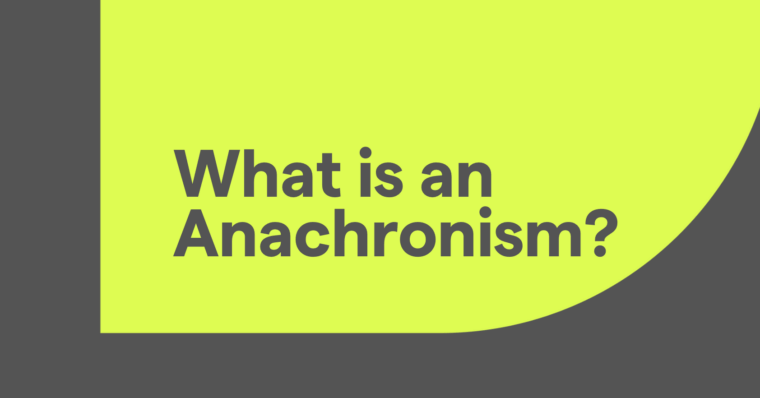
A personal statement is a short essay that highlights the best qualities of the writer, usually in the context of school or job applications. Somewhat autobiographical, personal essays delve into the talents, skills, passions, ambitions, and accomplishments of the writer.
Something to know when applying to schools, scholarships, or companies for a job is that the institution wants to know what kind of person their candidate is. Personal statements enable the evaluation of applicants, not just of what they say about themselves, but also of how they say it.
That makes writing personal statements a useful skill for getting accepted at your top school or dream job. Unfortunately, writing about yourself isn’t always easy—it’s quite a personal topic! So in this guide, we explain everything you need to know about how to write a personal statement, including some personal statement examples.
What is a personal statement?
As mentioned above, a personal statement is a resource used to evaluate candidates, especially for school applications, employment, scholarships, and some types of grants. It typically explains a candidate’s relationship with the relevant field, such as an academic discipline or job position.
Take a look at this personal statement example from Uni Compare. Notice how the writer, a prospective law student, discloses their passion for and understanding of legal matters, while also mentioning their relevant experience and achievements.
In another personal statement example from a would-be English literature student, the writer links their favorite books to their interest in the subject, even sharing personal stories of watching famous plays live at a theater, before listing off their academic accomplishments.
>>Read More: How to Communicate About Your Achievements
There are no set rules for how to write a personal statement—a lot of your writing choices depend on the assignment and reader—but they typically fall between 400 and 1,000 words, rarely exceeding a single page.
Personal statements can be either open or prompted. Open personal statements are when you, the writer, get to choose the main topic. These are often more difficult because it requires astute decision-making: How do you choose which parts of your life to write about?
Prompted personal statements narrow down the focus. This format usually offers a specific question as a prompt, or at least sets some guidelines for what you should cover.
How to write a personal statement
When writing a personal statement, follow the normal guidelines to essay writing; after all, a personal statement is often just a short specialized personal essay.
As with all serious writing, we recommend the six-step writing process. First and foremost, you need to understand the assignment, in particular the necessary topic(s) and target word count. Once you’re sure you know what you need to do, it’s time to begin.
1 Brainstorming
The brainstorming phase is when you come up with the different ideas to mention in your personal statement or decide what the main topic will be if the prompt is open.
For example, if the assignment asks you to write about a significant life event that influenced who you are, you could start by writing down all your most influential life events so that you could pick your subject from the list. The best choice is not always obvious: In this personal statement example, a student uses a conversation with their grandmother to transition into their interest in economics.
If you already know the most significant life event, you could then brainstorm the different ways it impacted you. Later, you can choose the best ones from the list to include in your personal statement.
What if you don’t know what to include in your personal statement? Here are some introspective questions to ask yourself to help you find personal topics to write about:
- What was the greatest challenge you’ve faced in your life? How did you overcome it, and/or what did you learn from it?
- What are you most passionate about? If you had a billion dollars, what would you choose to do all day?
- What skills, talents, or expertise do you have that your peers do not? What quirks or traits make you stand out?
- How does your background or identity affect your life? Do people treat you differently because of who you are? How does it change your behavior?
- Who are your personal heroes? How has their story changed your life?
Sometimes it’s hard to accurately reflect on yourself, so feel free to ask friends or loved ones for advice. Find out what talents and skills they admire most about you. What would they say are your best traits?
Once you have enough ideas to satisfy the requirements of the assignment and meet the word count, you can get started on outlining in the next step.
2 Preparing
The preparation, or outlining, phase is when you take all your ideas from brainstorming and organize them into a basic framework for your first draft.
Before you start structuring everything, however, ask yourself whom you’re writing for. Your reader determines not just your tone, but also what you choose to talk about in your personal statement (and what you choose to omit).
For example, if you’re writing a personal statement for a college application, the school’s admissions officers will probably be interested in your academic achievements, such as landing on the honor roll. However, if you’re writing a personal statement for a job application, academic achievements like the honor roll might not be worth mentioning.
Try to glean what your reader wants to know before you begin formulating your personal statement. University recruiters want to know if you match their school or program, so include facts about yourself that demonstrate you’re a good fit. Job recruiters want evidence that you’ll do the job well, so include proof of your work ethic and skill mastery.
With your specific reader in mind, reread your list of ideas from brainstorming. Choose which ones to keep and which ones to leave out.
From there, organize your ideas into the three sections of your personal statement: introduction, body, and conclusion. In this stage, you don’t need to worry about the details just yet. For now, just make sure all the required ideas are included and sequenced in the right order.
3 Drafting
When first learning how to write a personal statement, remember that the drafting phase is usually the longest and most involved—it’s the part of writing your personal statement where you actually write your personal statement.
Your rough draft, or first draft, doesn’t need to be perfect. Writing a rough draft is just about getting your ideas down; the next stage, revising, is when you focus on the fine details. For now, just write whatever comes to mind and worry about improving it later.
Just as when you’re writing a college essay, start strong with an opening hook, then expand on that idea in the following paragraphs. In this personal statement example from a chemistry applicant, the writer starts off with a seemingly unrelated personal anecdote, stoking the reader’s curiosity:
Swimming from a young age always made me ponder the thought, who cleans the pool and how do they do it? As I grew older I realised it wasn’t a case of who, it is a case of what. Essentially, chemistry held the answer.
The writer then connects the opening anecdote to the main parts of the personal statement—what the reader wants to know. In this case, it’s why they’re a good fit for the school’s chemistry program.
Writing objectively about yourself is not easy; you can’t always see the forest for the trees. If you feel stuck, it might help to try freewriting, a technique where you just write down everything that comes to mind, no matter if it’s unusable in the final draft. Freewriting is often the push you need to overcome an initial writer’s block.
Because the topic is your life, feel free to write openly and honestly. A lot of times, your readers want to hear your story in your own words—they can get the facts from your school records or résumé/CV, but they can only get your interpretation of these facts from you. Don’t disappoint them!
4 Revising
Choosing the perfect words and rearranging the structure is much easier when you already have a rough draft in front of you. Now, you can reread your personal statement and fix any areas that need improvement.
During the revision stage, follow these tips for self-editing, which include watching out for the passive voice, unnecessary words, repetition, long sentences, and a few other red flags. Don’t worry too much about spelling and grammar mistakes for now; you can handle those later when proofreading.
For personal statements, make sure everything would be clear to a reader who’s never met you. Because the topic is yourself, you may have forgotten to mention some key detail that a stranger wouldn’t know.
5 Proofreading
With your personal statement polished, you can begin proofreading. This is when you fix all the technical problems like spelling and grammar mistakes, as well as other general issues like formatting.
Before you start proofreading, it’s a good idea to take a break from working on your personal statement. For one thing, it’s healthy for you to take some time to relax, especially if you’ve been working on it for a long time. Moreover, returning to your draft after you’re refreshed can help you notice small problems you hadn’t seen before.
If you’re not confident with your knowledge of English spelling or grammar, you can always get help. Grammarly’s writing suggestions find and highlight any mistakes you make while typing, so you can go back and fix them whenever you like. On top of that, Grammarly’s tone detector helps with your phrasing, letting you know if your language is appropriately formal for a personal statement.
Those features are all available in Grammarly’s free offering, with even more in Grammarly Premium. Download Grammarly now to see how your writing improves.
6 Submitting
The last step is an easy one: Turn in your personal statement. Double-check that you’ve fulfilled the requirements, including word count, and make sure it’s in the requested format (PDF, Word document, etc.).
What comes next, though, is truly the hardest part of writing a personal statement: waiting for a response back!





